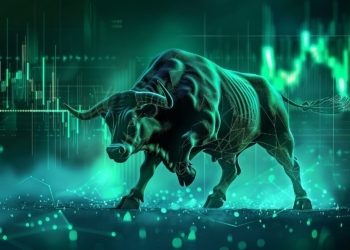What Exactly Is Crypto Seasonality?
The belief that Bitcoin would increase and fall over a specific period of time, influencing the crypto market in general, is known as crypto seasonality.
Bitcoin (BTC) is indeed the world’s biggest and the very first cryptocurrency.
It has a great deal of value locked up in it because it was the first cryptocurrency, and all subsequent coins, commonly known as altcoins, are linked to it in some manner.
Bitcoin, on the other hand, is a volatile asset.
The value of the world’s first cryptocurrency fluctuates wildly, plummeting or climbing by tens of thousands of dollars at any given time.
Due to the Bitcoin halving, this instability is likely to reach a peak every four years before plummeting very severely. The Bitcoin blockchain is designed with the Bitcoin halving.
The halving happens every four years, and the incentives for mining Bitcoin are reduced by half, thereby reducing the amount of Bitcoin in circulation with each block mined.
After a halving, the market tends to correct, with Bitcoin’s price soaring owing to its scarcity, only to fall shortly after as speculators cash in their newly-earned profits, causing the market to overcompensate.
As Bitcoin falls in value, more investors are concerned about their holdings and may withdraw funds to invest in altcoins.
Is Crypto Seasonality Beneficial Or Harmful?
Everyone will be impacted. However, whether it is beneficial or harmful relies on your investment style. Depending on your point of view and investment style, crypto seasonality may be both beneficial and harmful.
Seasonality may be beneficial to newbie traders, as they may now invest in Bitcoin at a lesser cost. Long-term investors, on the other hand, may dislike crypto seasonality since their Bitcoin holdings are highly certain to fall every 4 years, forcing them to stick it out or reinvest in altcoins.
However, due to supply and demand, one can typically always expect Bitcoin to rise again. While no assurance exists, the dominant cryptocurrency has historically climbed to new highs following each halving.

How Does Cryptocurrency Seasonality Impact Investors?
Bitcoin-only investors may be forced to play the game in the altcoin market due to crypto seasonality.
When the bitcoin prices fall, investors are practically driven into the altcoin market to keep making money. However, altcoins are unpredictably volatile, and a venture that is hugely successful one day might crash the next.
Scams abound in the cryptocurrency industry. Investors have been taken advantage of due to rug pulls and fraudulent marketing. Regulatory policies are still being developed and may have a detrimental impact on a trader’s experience.
Hacked exchanges can result in the theft of assets. In the wild west which is the altcoin market, anything may happen at any time.
Certainly, some methods are safer than others.
Investors can purchase proven passive income ways such as Uniswap’s (UNI) liquidity pools, or engage in the mining or staking process of a currency instead of merely investing in it, although there is still a risk attached with these methods.
Dealing With Crypto Storm
One crypto seasonality option is to keep adding assets to your portfolio.
Although there may be various solutions to crypto seasonality, Seasonal Tokens is working on a possibly safer alternative to typical trading strategies.
Seasonal Tokens are meant to boost and decline over nine months in order to give investors with a much more steady alternative to Bitcoin’s downtrends.
Spring (SPRING), Summer (SUMMER), Autumn (AUTUMN), and Winter (WINTER) are the four seasons that the project divides into tokens. Preferably, investors will purchase Spring tokens when they are the cheapest to create and retain them until the price rises.
Now as seasons change, investors will shift from Spring to Summer tokens, which will supposedly rise in value next, and so on.
In an idealistic situation, an investor would swap Spring tokens for Summer tokens when Spring tokens are the most costly to create and Summer tokens are the least expensive, increasing their total quantity of tokens.
The investor would then sell Summer tokens for Autumn tokens at their lowest level when they reached their peak, gaining even more.
Interval-based production reduction, similar to the Bitcoin halving, is the result of these highs and lows. Spring token production, for example, will be reduced by half in June, making it more expensive to create than other tokens.
Users would swap their Winter tokens for Spring tokens and benefit from their rarity by the time Spring arrives, all without investing any more real-world funds.
Seasonal Tokens claim to give an asset that is continually collecting and gaining in value, providing a secure place for investors to move cash during a Bitcoin bear market, based on this idea.
Also read: What Is A Crypto Wallet And How Is It Classified?













Discussion about this post